Slow and steady has defined Oldhim from day one. A deck content to grind out matches with heavy blocking and damage prevention, Oldhim has seldom dominated the competitive scene, instead preferring to act as a gatekeeper for Top 8 placements. Every deck needed to have a plan for facing the Grandfather of Eternity, and when they failed, Oldhim would claim another victory. Now, 20 months after his debut in Tales of Aria, Oldhim has finally crossed the finish line.
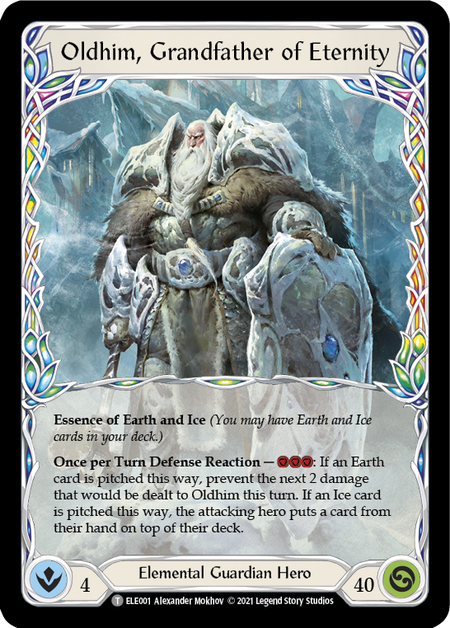
To be clear, Oldhim is not fully retired yet. He's turned in his notice (1000+ Living Legend points in Classic Constructed) and is burning his vacation days (already resigned from Blitz) until his anticipated retirement date of July 3rd, when the next Banned and Suspended Announcement is scheduled. But with the writing on the wall - and a lull in the competitive tournament cycle - players have already begun moving away from both Oldhim and the tech cards to counter him.
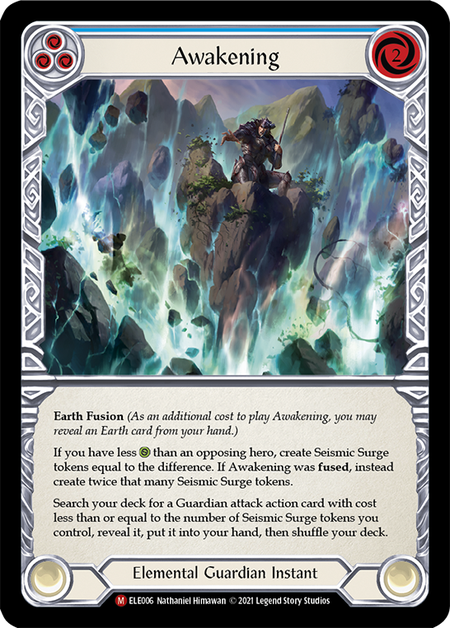
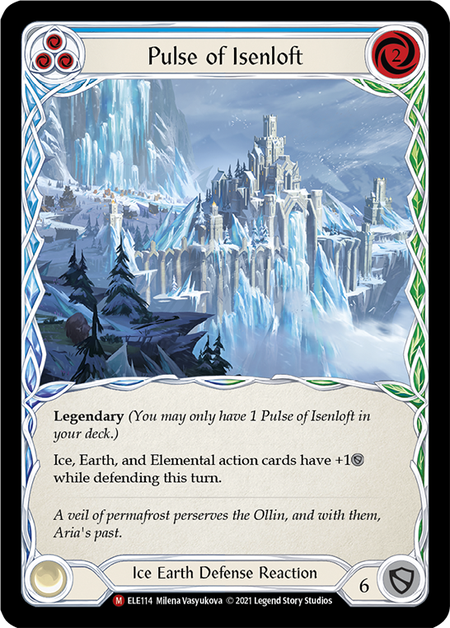
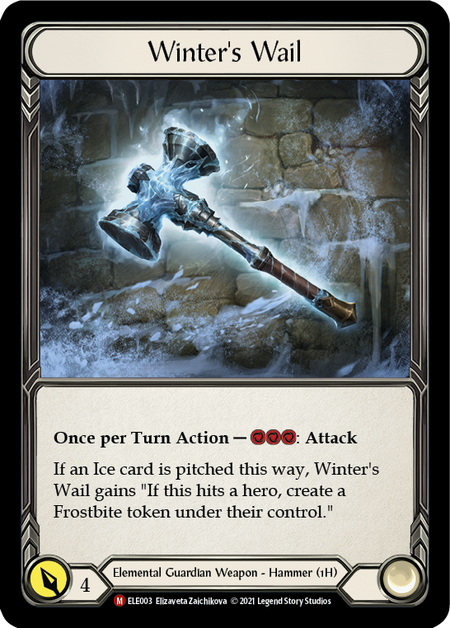
Along the way, Oldhim was responsible for the banning of a number of cards. Awakening was the first to go, followed in time by Pulse of Isenloft and Winter's Wail. Oldhim was also the victim of the company he kept; he lost Hypothermia and Amulet of Ice due to his overlap with Iyslander's card pool, and even Autumn's Touch was, at one time, banned from the card pool as a result of Starvo.
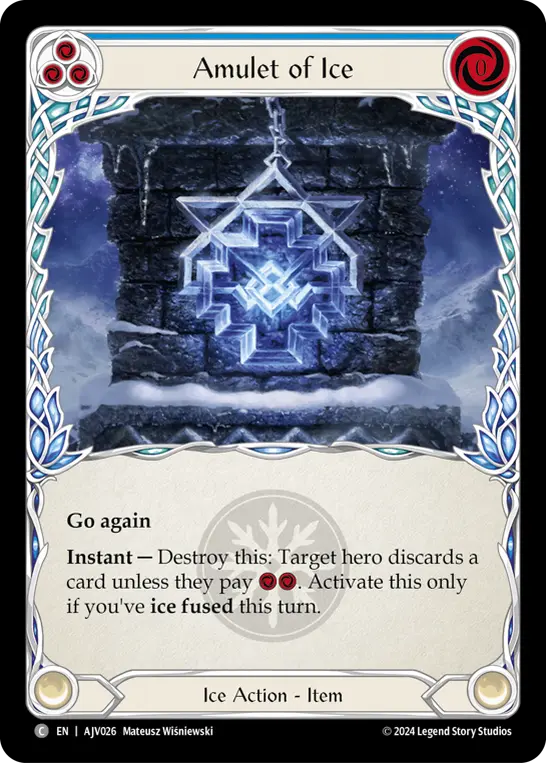
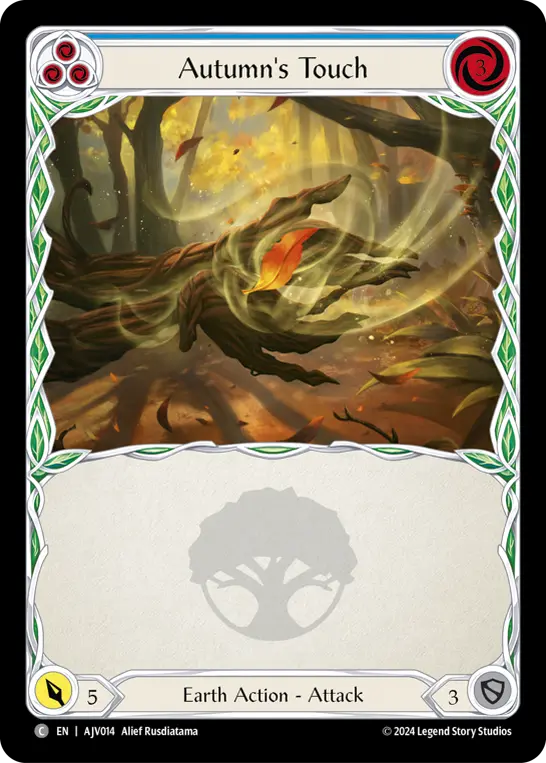
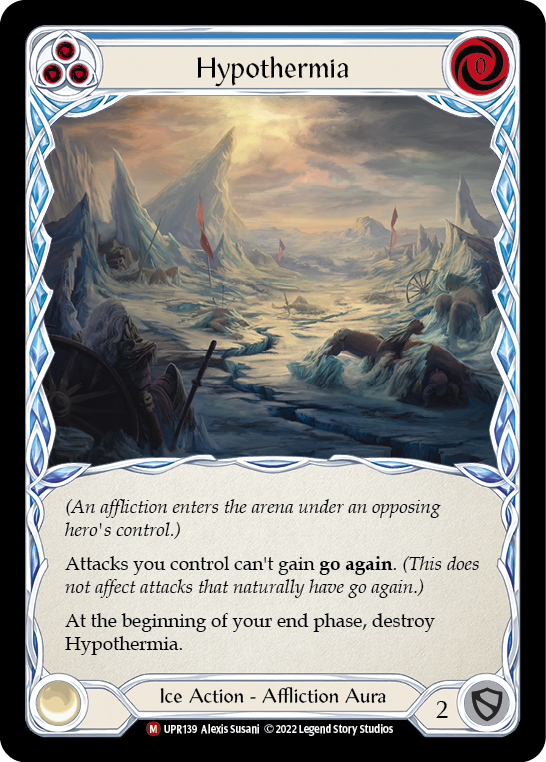
But enough looking back. We're looking forward, and identifying organic paths forward for today's Oldhim players.
The Essence of Oldhim
Maining Oldhim required flexible thinking and constant reassessment - in deckbuilding, because of the bans and suspensions, but also in gameplay. Oldhim's typical play pattern is a long affair, focused on gaining small margins of advantage in the course of defending and pitching. But to be effective at that, pilots needed to know when to pivot and take an offensive stance, or when to hunker down and trust in Oldhim's ability to outlast the assault.
You will not find two more different games than Michael Feng's last two rounds of Pro Tour: Baltimore. In the Semifinals, Feng won over Juha Saarnilampi in a 2 hour game; then, Feng claimed the championship over Mara Faris in 30 minutes. Both opponents were on Dromai, but Feng knew enough about not just the hero laid out before him but how the players piloting both decks had built her; his path to victory was drastically different into each, and he pivoted for that expertly.
Oldhim provided steady, predictable play patterns that let your mind focus on what your opponent was doing, rather than figuring out what you were going to do. With a high blue count, paying for cards was seldom a question. Hammer-wielding heroes have a reputation for swinging their weapon as often as they play attack action cards, creating a reliable floor of damage output for any turn. And the FAB-unique skill of pitch stacking could be used to reliably craft a strong endgame for Oldhim.
The deck commonly maintained control via flexible and modular defensive options. From your board state alone, Oldhim could prevent 1 damage with a shield, 1 from Crown of Seeds, and 2 more from his own hero power. These defensive options required resources, but not cards - which meant you were preserving options for the future while most heroes are giving them up.
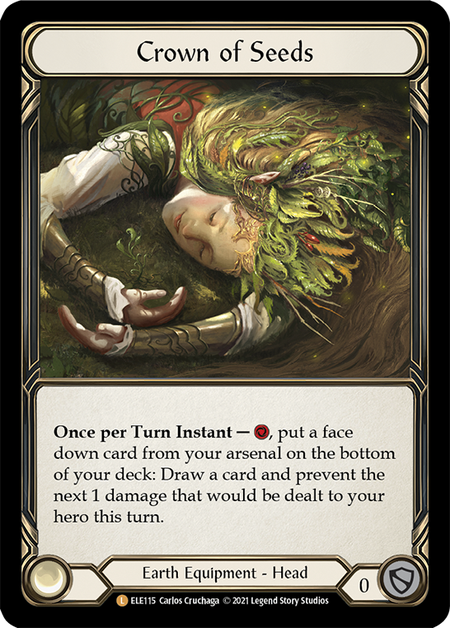
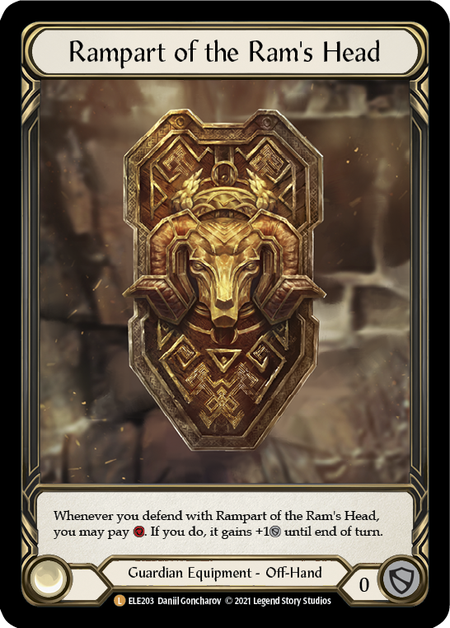
But when Oldhim decided to let loose, his attacks were absolutely definitive. Oaken Old and Endless Winter have consequences that shape the opponent's next turn, but even a humble hammer swing could be devastating with Tear Asunder. These big hits mattered more than anything from aggro heroes like Fai, Lexi, or Briar, making for memorable moments in your matchup.
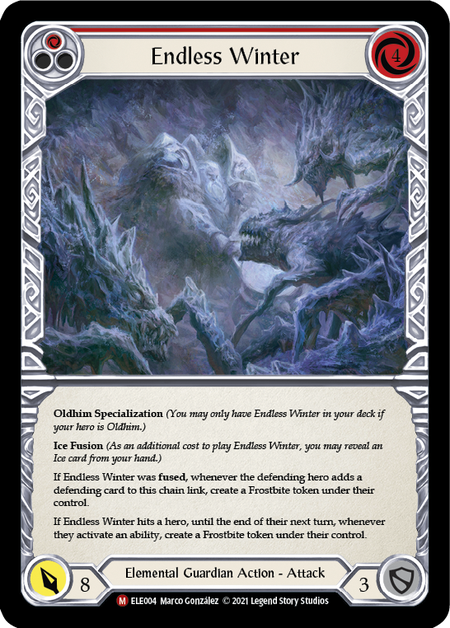
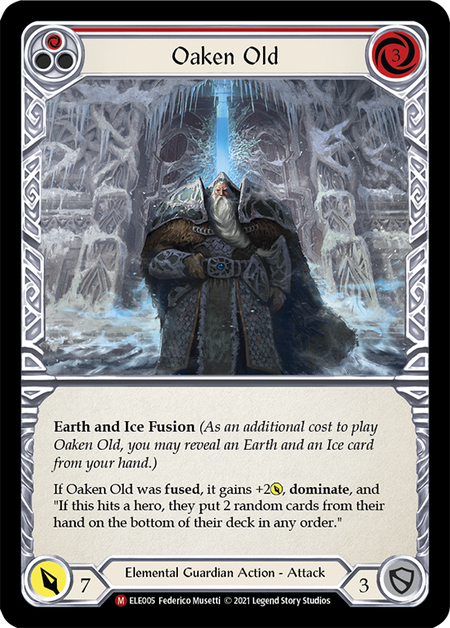
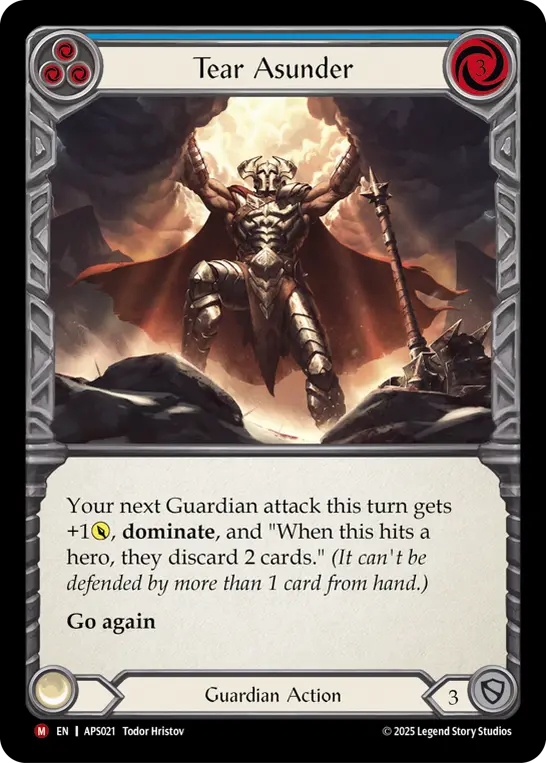
Moving forward, this is the kind of gameplay we'll be looking for.
Budget Options
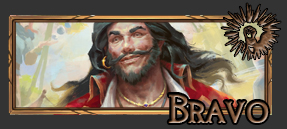
For many, this conversation has to begin at the budget. It can be an expensive prospect changing decks; any cards we can continue using represent real savings. Fortunately, a lateral move within the Guardian class should also feel quite comfortable from a gameplay perspective.
Bravo has remained a relevant hero for the entirety of the game's history, and in that time has grown more strategically diverse. While many builds focus on Bravo's on-demand dominate and crush effects with a tall, aggressive posture, you can also hew toward the defensive options of the class to create a similar 'wait them out' play pattern. A Crippling Crush feels an awful lot like an Oaken Old, and the tempo pivot is the same. You'll lose the regular disruption of Oldhim's Ice affinity, but gain the ability to ensure your on-hit effects trigger.
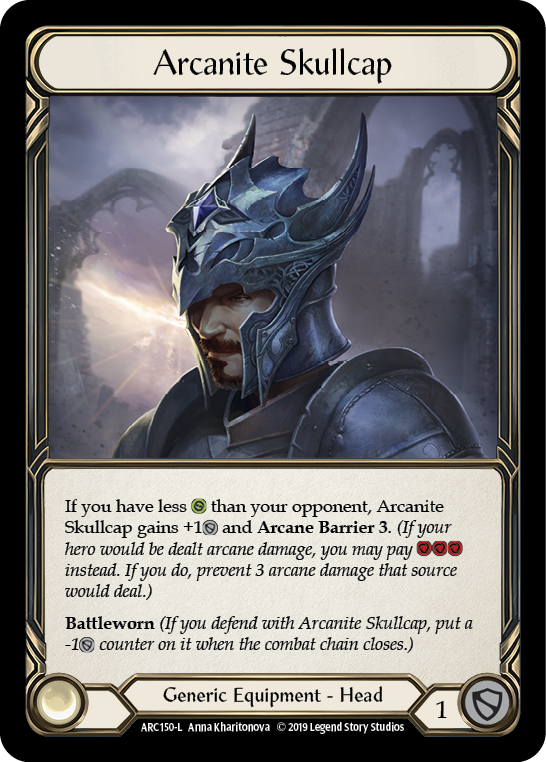
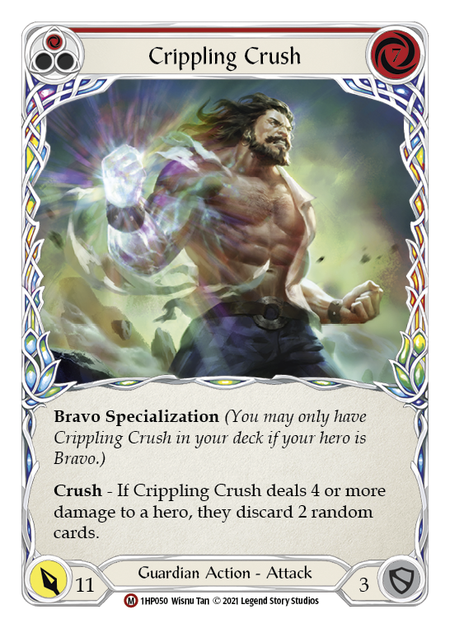
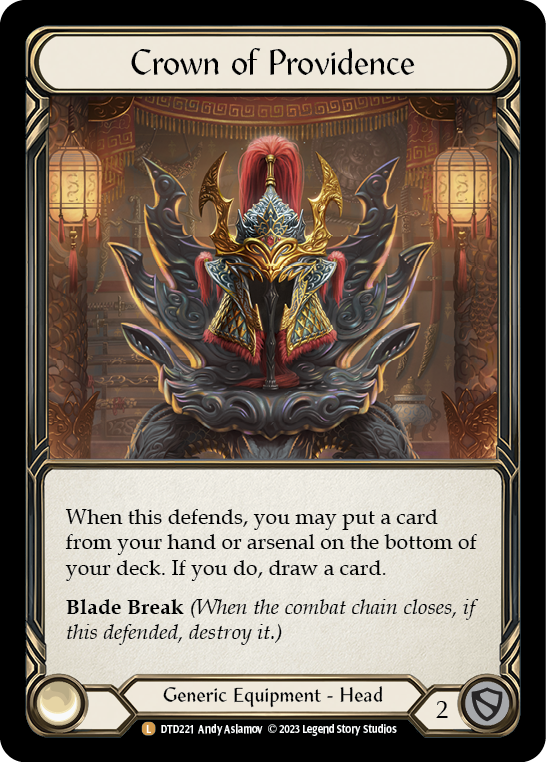
Your most expensive adaptation is likely to be the helm, if you never picked up an alternative to Crown of Seeds. Crown of Providence is the best in class, but Arcanite Skullcap is a fine choice as well, and much more affordable. (Thankfully, either has wide applications across many decks, so they can be viewed as long-term investments in your FAB collection.)
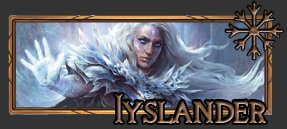
The other card pool overlap that's worth considering is Iyslander. While Bravo maintains the defensive posture and tall Guardian attacks, Iyslander transfers over the disruption of Ice. And while Iyslander isn't known for defense, she does offer unique options for disruption within the same window due to her instant-speed plays from arsenal.
Oldhim was a hero who forced opponents to play around what he could do, and Iyslander is similar. For that reason, while Wizards play the game entirely different from Guardians, many Oldhim players will feel at home with their role in a matchup as the alpha personality that sets the terms of engagement. Likewise, the predominance of blues should make the pitch curve feel predictable and familiar- you should always have enough resources to pay for whatever you want to do. And of course, dropping a Wounded Bull on the table feels like a Guardian moment.
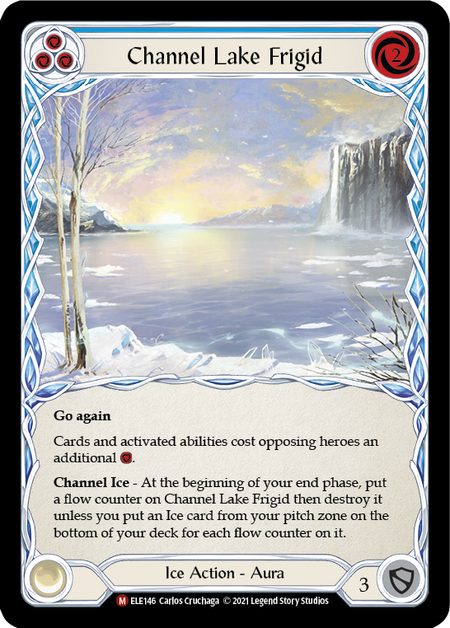
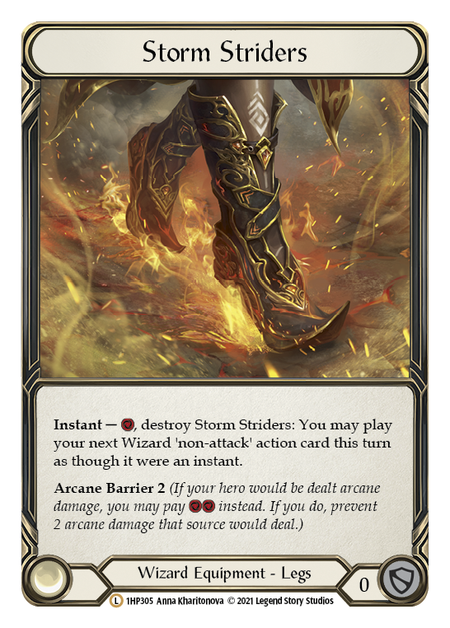
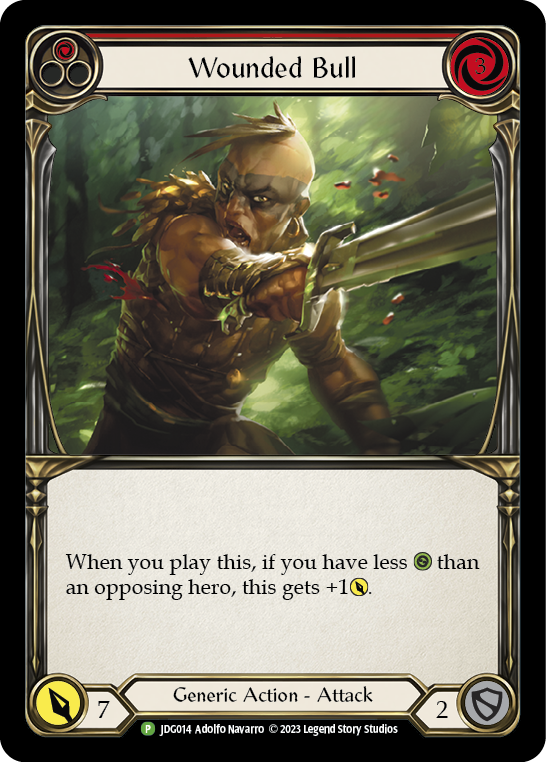
Talents typically supplement the core class cards that make up a deck, and as such there's much less carryover from an Elemental Guardian to an Elemental Wizard. You will also have a number of equipment cards to pick up before you've reached an optimal configuration - including Storm Striders and Fyendal's Spring Tunic. As such, it's tenuous to call this a 'budget' move. But having 3 Channel Lake Frigids already in hand represents a significant savings off a 'from scratch' build.
Comparable Control
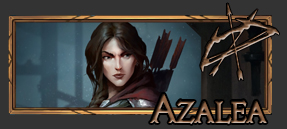
If you loved Oldhim for the control aspects of his strategy, then Outsiders has just what you're looking for in the reborn Azalea. The affliction tokens of the Pits mirror Frostbite nicely while obstructing in different ways; and like Oldhim, Azalea is fine with taking a turn off to line up her next big shot.
That said, Azalea is no comparison defensively. With a fragile equipment suite and many 2s on their non-attack actions, Rangers rely on proactive disruption to supplement their blocks. It's an entirely different way to come at defending, and one that will take a lot of getting used to if you're migrating from Elemental Guardian.

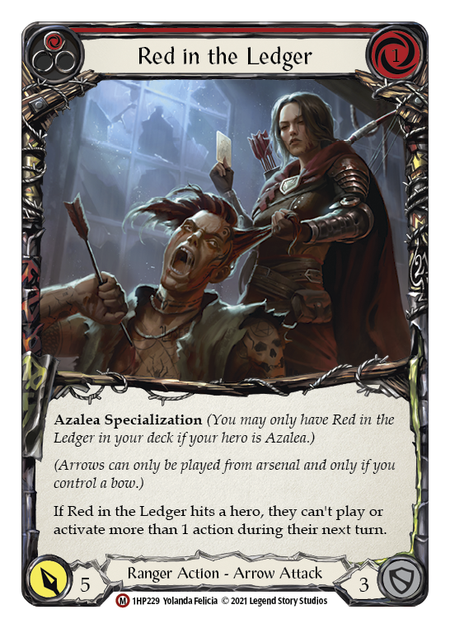
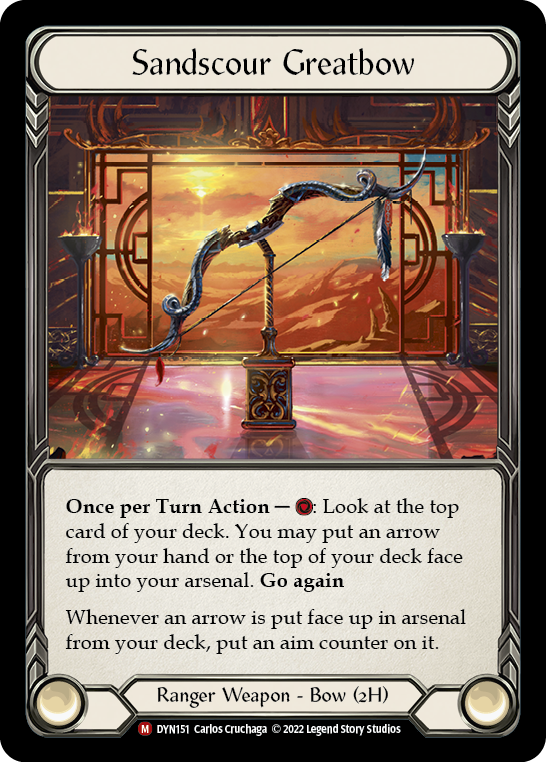
Specifically for the Oldhim refugee, I'd recommend looking into the Sandscour Azalea archetype for a gameplan that aligns a little more closely with his. Its more forgiving arsenal use and strategic use of pivot turns moves Azalea from an aggro posture to one of control and disruption. You will, unfortunately, need to obtain a New Horizon; but as consolation, you can shift gears and dabble in Lexi if you'd rather sit at the helm of the competitive metagame or utilize your Ice tools.
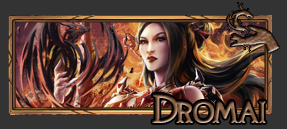
Like Oldhim, Dromai doesn't concern herself with the pitch curve. She knows her cards will be red, and has budgeted accordingly. What's more, Dromai assembles a board full of dragons that she can weaponize, similar to Oldhim's 'fall back on hammer'. While Dromai builds can vary, many take a long game perspective as they look to create a board state of inevitability. These dragons can draw fire away from your hero and give you breathing space to piece together dramatic turns.
Through the varied effects of her dragons, Dromai has access to a number of targeted disruption options. Kyloria is a nightmare for Dash, Themai interferes with Wizards, and Tomeltai threatens equipment cards like the niche Ice tool Expose to the Elements. But Illusionists also bring an understated element of disruption just by the nature of their toolkit: opponents will side in equipment and cards specifically to deal with phantasm and Ashwings. These cards usually come at the expense of what the opponent would like to be running, decreasing the overall cohesion and efficiency of their build.
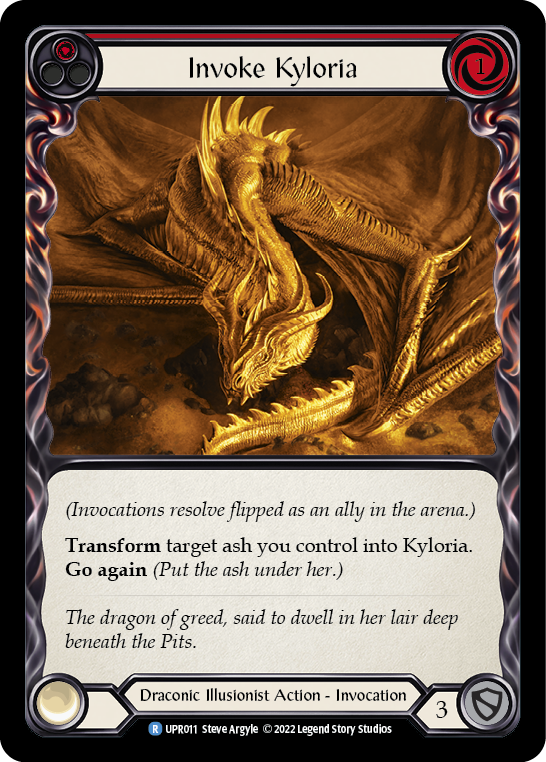
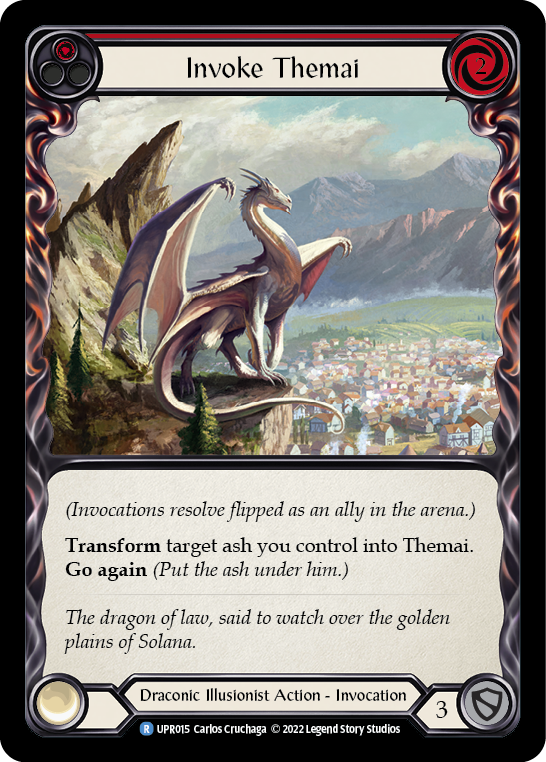
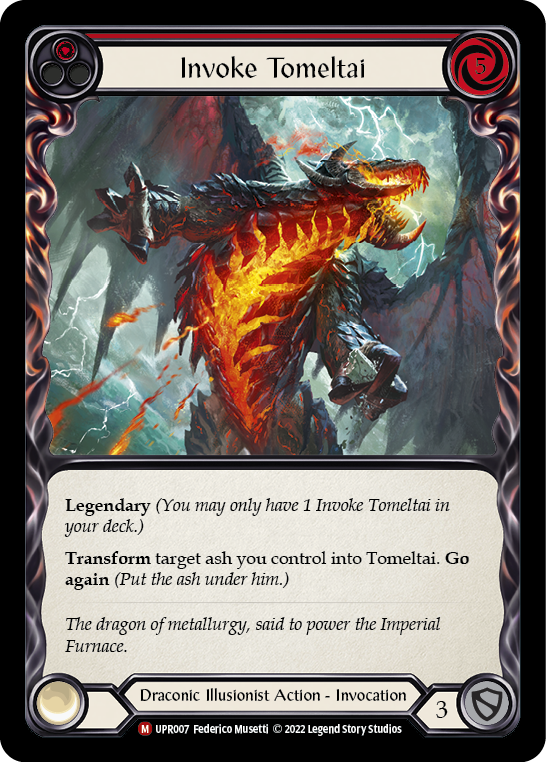
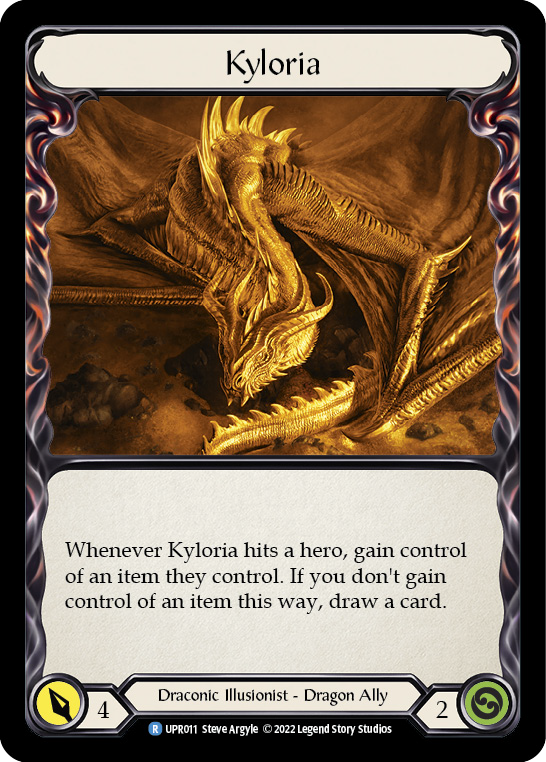
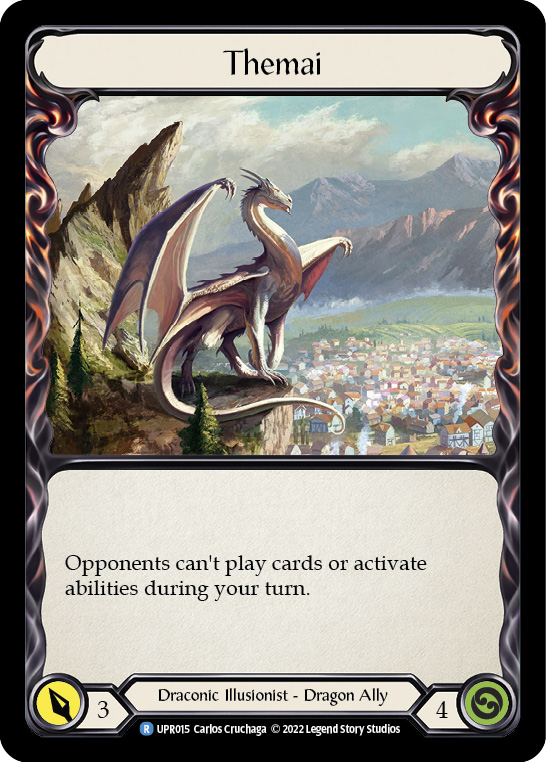
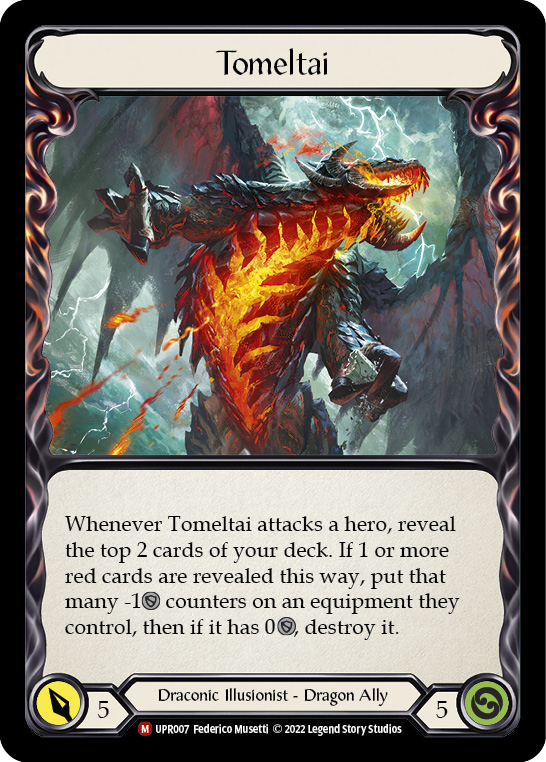
If you enjoy being 'the deck they sideboard for', Dromai might be the next hero for you.
Defensive by Default
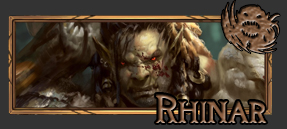
If you haven't played much of Rhinar, it may surprise you just how naturally he slides into a defensive posture. Brute-class cards consistently block for 3 (aside from the rare card that doesn't block at all), and the Romping Club is a fine backup plan for turns where a 3-card block is required. In fact, the default plan for a Brute is to use a card or two blocking, because you want to control for what you 'randomly discard' and because you can't make use of all 4 cards under normal circumstances.
What we give up is conventional disruption. Rhinar tends to push straight numeric damage, with no other consequences; as such, he can find himself in races with faster decks, struggling to gain the upper hand. Rhinar's disruption is contained entirely in his intimidate ability, which limits your opponent's options for how they defend. If they're in a position where they can comfortably eat the raw damage, intimidating cards away during defense is meaningless.

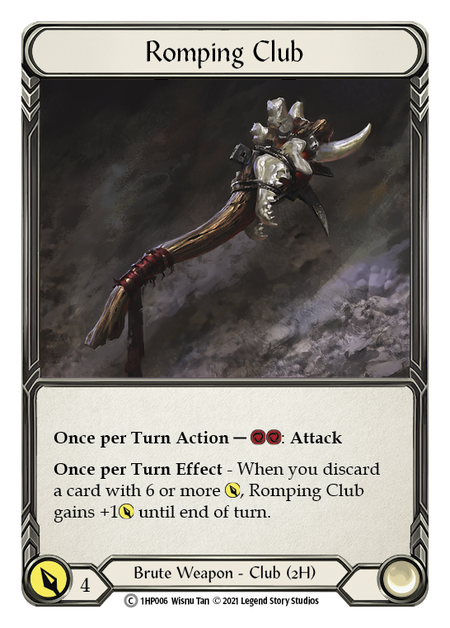
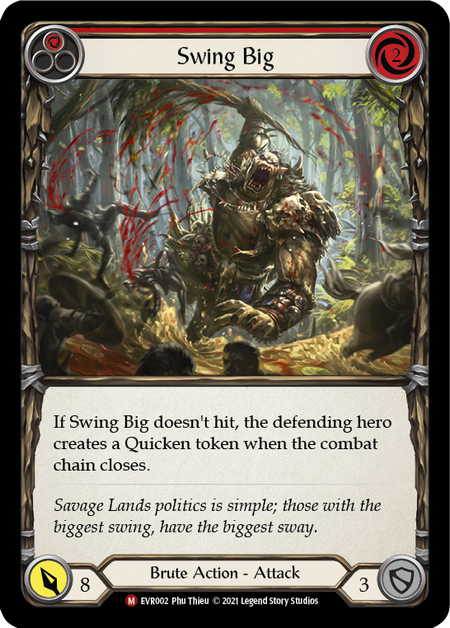
Bloodrush Bellow serves as an anchor card to the whole deck, and signals when you should take a round off blocking to push damage. Essentially, this is the Tear Asunder of the Brute world. And like Tear, Bellow can also be used with a simple weapon swing to get value even on a dud hand. These familiar backup plans can help you transition to a new hero smoothly.
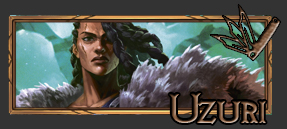
While Arakni is more emblematic of the Contract Assassin playstyle, it must be said that Uzuri is, for the moment, the more playable choice. Contract decks aim to fatigue the opponent, but in a slightly more proactive fashion than Oldhim. By banishing with their attacks, Assassins pull an extra card out of the opponent's deck every time they're not fully defended.
Assassins also enjoy a card pool full of 3-blocks. This lets them block out with whichever cards don't work well for their next turn, instead of being forced into decision by the varied block values of their hand. With many contracts coming in at 4-for-0, a one-card hand is perfectly playable, and every card banished moves the game plan forward.
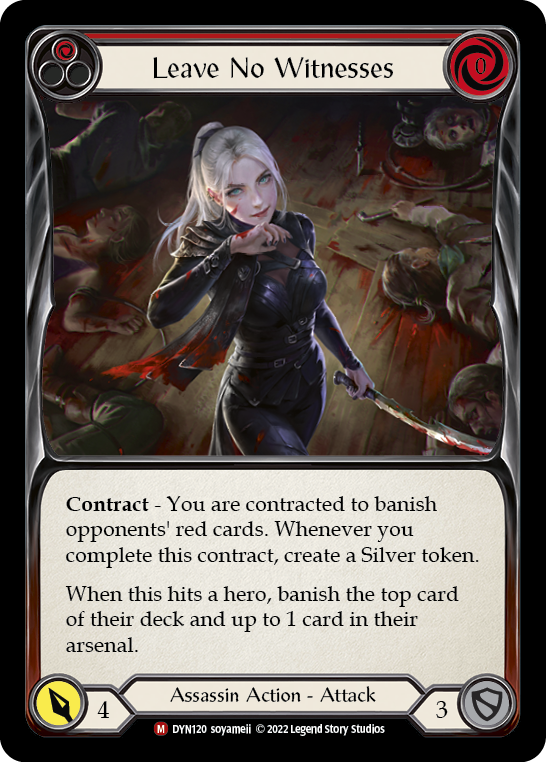
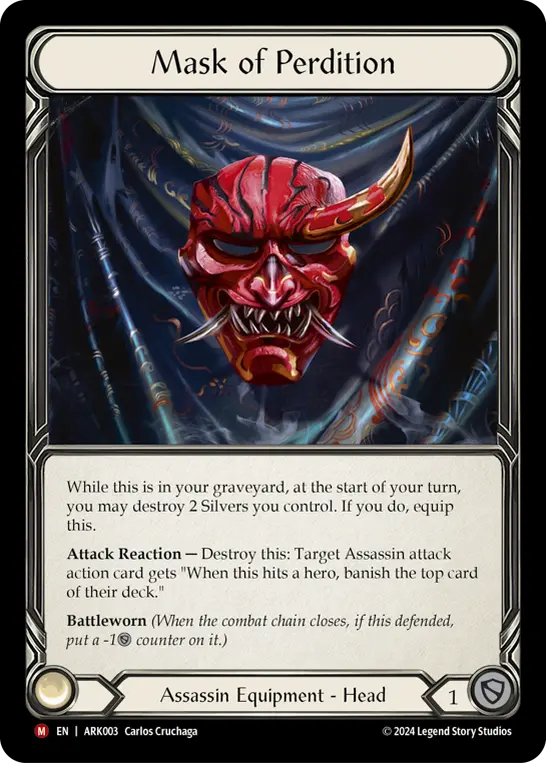
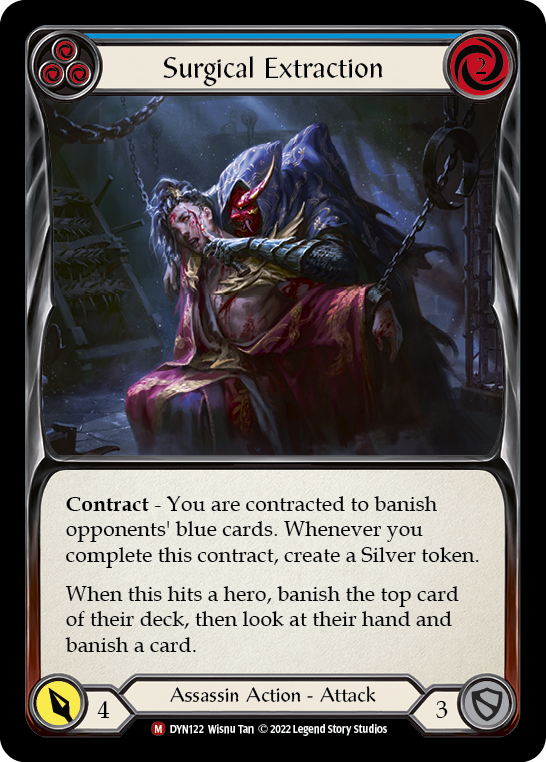
While none of their equipment sport high block values, the ability to re-purchase them after use makes equipment blocking a defining feature of the Uzuri gameplan. As with Oldhim, this makes breakpoint attacks easier to block, and shifts the dynamic in matchups where 4s are strategically chosen to leak damage, such as Briar and Lexi.
The Legacy of Oldhim
Oldhim's movement out of the two predominant formats changes the game dramatically, and when making decisions about where you're going next, you'll want to keep that in mind. Without Oldhim, decks are more likely to lean into recklessly aggressive playstyles that previously carried the risk of fatigue. Fai has already seen an uptick, and that should only continue as July arrives. Similarly, a few heroes like Azalea were significantly held back by Oldhim's presence, and are now free to make their true potential felt.
Whether you choose to follow Control or Fatigue, stick with the class or stick with the talent, you'll need to keep in mind that the meta is shifting along with you. You may replicate some of the effects of Oldhim in your next deck, but you'll never bring it all together the same way; and because of that, you'll need to learn different play patterns and strategies to deal with threats that inherently never concerned Oldhim.
Congratulations to all of you who put your mark on this moment. Now go find your next opportunity.




